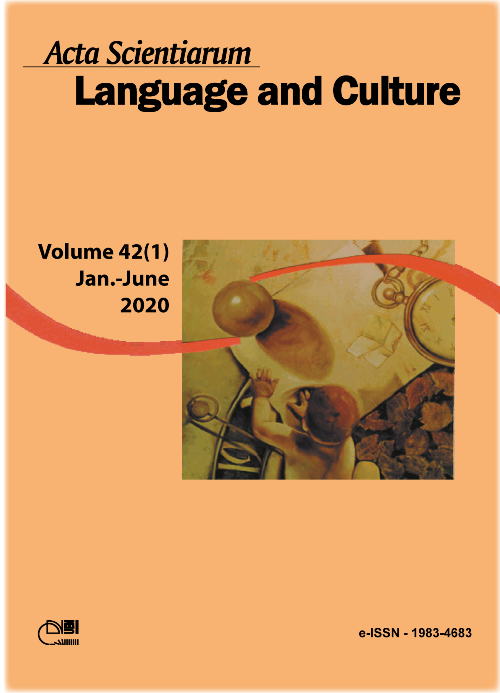O The conjunctional status of nisso: formal and functional evidences
Abstract
The aim of this paper is to argue in favor of the conjunction status of nisso on temporal, causal and contrastive constructions. For this purpose, we collected contemporary data on nisso in spoken texts taken from Iboruna database and we intend to analyze them in the light of formal and functional aspects, aiming to highlight the properties that qualifies nisso as a conjunction. Based on a theoretical framework that acknowledges junction as a universal dimension of language (Raible, 2001) in different levels of linguistic analysis, we will defend that the technique of junction established by nisso is achieved through ‘reference’, with a strong contextual dependence, which characterizes the paradigm of adverbial junction (Neves, 2002; Blühdorn, 2008). In this perspective, from a qualitative and quantitative approach, aspects regarding the compositionality of nisso and the complexity of the binary construction that it is part – X, nisso Y – will be discussed, also considering inherent features related to the mode of connection, to the referencing encapsulation functionality of nisso, to the position and to the information status of the units, as well as to the polysemous network encompassed in the construction examined.
Downloads
Metrics
DECLARATION OF ORIGINALITY AND COPYRIGHTS
I Declare that current article is original and has not been submitted for publication, in part or in whole, to any other national or international journal.
The copyrights belong exclusively to the authors. Published content is licensed under Creative Commons Attribution 4.0 (CC BY 4.0) guidelines, which allows sharing (copy and distribution of the material in any medium or format) and adaptation (remix, transform, and build upon the material) for any purpose, even commercially, under the terms of attribution.
Read this link for further information on how to use CC BY 4.0 properly.




















6.png)









